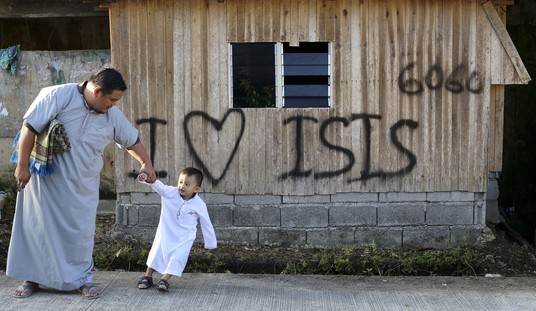The media has a way of taking an atrocity and making it seem like our world has come down with a serious case of it.
After each shooting, the media dedicates untold amounts of attention to shootings past, present, and future. You’d be forgiven for believing the United States is soaked in the blood of the victims of mass shootings, specifically in schools.
In fact, anti-gun organization Everytown likes to throw up scary numbers about 18 school shootings having occurred this year. Including Maryland, we can bring their count up to 19, but the real number is actually four. Of course, that’s four too many, but the way Everytown tells it, anytime a live round is shot off inside or near a school campus, regardless of the context or outcome, it’s a school shooting. This may include something along the lines of a man committing suicide in the parking lot of a closed down elementary school.
According to a new study from the Heritage Foundation, the hysterics over the number of school shootings handed to us by the media aren’t half as bad as they portray it. Furthermore, they are rarer now than they were in the 9o’s:
Statistically speaking, however, such events are still highly infrequent. In particular, shootings during normal classroom hours that result in injuries or death are incredibly rare in America’s primary and secondary schools. Out of the more than 55 million K–12 students across the nation’s public and private schools, an average of 10 students are killed every year by gunfire at school.
To put this number perspective, over 800 students die every year during regular travel to and from school.
Even rarer on K–12 campuses are the types of high-profile, multiple-casualty shooting rampages characterized by names like Columbine, Sandy Hook, and Parkland. Since 1990, America’s 100,000 public primary and secondary schools have experienced 22 on-campus shootings that resulted in two or more fatalities (excluding the shooter), for an average of less than one multiple-fatality shooting per year.
Most of these multiple-fatality shootings were not “Columbine-style” mass shootings: Of the 22 incidents since 1990, only nine involved the deaths of four or more people. Since 2000, there have been 17 shootings at K–12 schools that resulted in two or more injuries.
The deaths, though lower in number than the media would let on, are still horrific. However, as Heritage notes, schools are still statistically the safest place for kids to be, despite the fact that they spend a good deal of their time there:
Less than 3 percent of all youth homicides occur on a school campus, even though it is where youths spend a large portion of their time.
Since 1992, when the NCES began to compile data on school-related violent deaths, the highest number of on-campus student homicides at K–12 schools in a single school year has been 34, which occurred during the 1992–1993 and 1997–1998 school years. During the 2013–2014 school year, the NCES concluded that there was approximately one student homicide or suicide at school for every 2.8 million enrolled students. Meanwhile, an average of 50 children ages 7 to 18 are murdered by their parents every year.
Despite their statistical safety, we shouldn’t rest in our attempts to make them safer. However, the approach taken by anti-gun activist groups and politicians will help nothing. What has proven to help is the inclusion of guns, and officers willing to use them. The latest attempt at a mass school shooting in Maryland being stopped in its tracks by an armed resource officer is the latest proof of that.














Join the conversation as a VIP Member